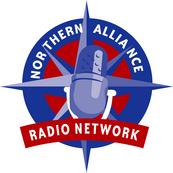Overwatch
Belmont Club analyses a terrific post from Chester where he compares a Time Magazine article with some DoD briefings.
The Time article uses phrases like these:
Col McMaster used phrases like these:
Col. Brown used phrases like these:
Sigh. Read all of Chester's piece, it's terrific.
Belmont Club adds this:
The mainstream media has not done enough to tell the complete story of the progress being made in Iraq. It is left to terrific bloggers like Belmont Club, Chester, and Bill Roggio to try and piece the story together from their living rooms.
To that end, Chester refers to a flash presentation put together by Bill Roggio, Marvin Hutchens, and Steve Schippert. It can be found here.
It points out the various operations conducted recently in northern Iraq as part of the larger campaign to put pressure on the terrorists, as I wrote about earlier.
There is so much the media could be doing here. These operations can be a confusing string of names and places, but there is an opportunity to tell the story to the American public, to inform us of the plan US and Iraqi forces have, of the skill they show in carrying out these operations, of the success we are seeing.
The Time article uses phrases like these:
"elusive and inexhaustible enemy"
"success" is "elusive"
"inexhaustible enemy emboldened by the US presence"
"gradual . . . erosion" in public support
"millions of Iraqis will vote on a constitution that threatens to further split the country"
"beleaguered US mission in Iraq"
Col McMaster used phrases like these:
"The enemy . . . is the worst of the worst in terms of people in the world."
"no better enemy for our soldiers and Iraqi army soldiers to pursue and defeat"
"our troopers were very aggressive"
"we pursued them very effectively"
"gain access here by a very good relationship with the people"
"they can't hide in plain sight anymore"
"there's a permanent security presence here"
"the enemy is denied that area"
Col. Brown used phrases like these:
"desperate situation for al Qaeda and the insurgents in Mosul"
"sources we have inside the al Qaeda network . . . have . . . informed us of that"
"population clearly understands they want freedom . . . they are sick and tired of
the terrorists"
"the government has really improved their legitimacy"
"the Iraqi forces are getting better"
"the situation improving on a daily basis in Mosul"
"normalcy has come back to the city"
Sigh. Read all of Chester's piece, it's terrific.
Belmont Club adds this:
It's possible that the author, Michael Ware, has a certain point of view and he is certainly entitled to it. The problem I had, reading it, was with the who, what, where, when of the narrative. What really happened at Tal-Afar? Let's consider the battlefield metric of casualties. How many enemy troops died? Ware's answer is found in two places, suggestive, atmospheric and devoid of particulars.
...
The only thing that will matter in the long run is not which opinion was better expressed, but which of these two stories was true.
The mainstream media has not done enough to tell the complete story of the progress being made in Iraq. It is left to terrific bloggers like Belmont Club, Chester, and Bill Roggio to try and piece the story together from their living rooms.
To that end, Chester refers to a flash presentation put together by Bill Roggio, Marvin Hutchens, and Steve Schippert. It can be found here.
It points out the various operations conducted recently in northern Iraq as part of the larger campaign to put pressure on the terrorists, as I wrote about earlier.
There is so much the media could be doing here. These operations can be a confusing string of names and places, but there is an opportunity to tell the story to the American public, to inform us of the plan US and Iraqi forces have, of the skill they show in carrying out these operations, of the success we are seeing.








1 Comments:
At Fri Sep 23, 10:29:00 AM, Anonymous said…
Skill is correct. Big Army threw away their counterinsurgency manuals after 'Nam and vowed to never fight one again. Hmmm.
Anyway, given a mud sandwich and told to eat, I am amazed at how much has been accomplished with whats been given. Remember no general had much/if any of a post invasion battle plan (see Tommy Franks book) and the resulting chaos was handled as best could be. So here we are.
Going from zero doctrine and training to all thats being done is truly amazing.
And...given the numbers of troops we have here is another stunning display of American adaptiveness and ingenuity. It is now quite apparentive that troop levels were set in stone and no further increases would be allowed so each sector commander has to make do with what he has.
Given this what would YOU have done? Say a Colonel was given X town/area which included all the roads, bridges,hospitals, sewers, schools, police, army, Power grid and distribution infrastructure, etc etc you name it. HE is suddenly responsible for all that in the midst of chaotic warfare with competing factions and his limited numbers of troops and $. All that dealing with all major and minor infrastructure looted or destroyed in invasion. Add trying to train and new police and army force of dubious ability and loyalty.
You get to be power broker, mayor, construction engineer, etc. As George Will says, Well...
But I digress, I emphasize troop numbers. Do some simple math. Total area, rest and rotation schedules, attrition, etc and you will quickly realize even in an area like a simple town you would quickly want more troops.
Now, if I was the bad guy and had home turf advantages...there is lots of mayhem I could plan and carry out given the opponent I would face.
I would say the US has received an amazing return on its "invasion investment".
Now, if we only had the 350,000 or so troops the 1990s Centcom invasion plans had called for...what might have been.
Post a Comment
<< Home